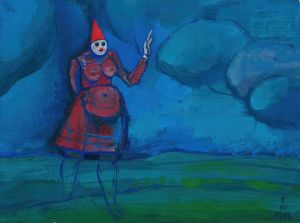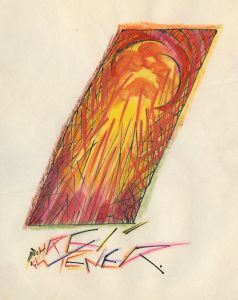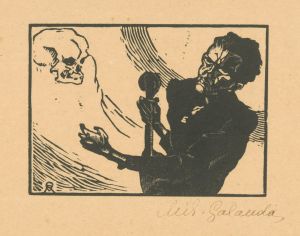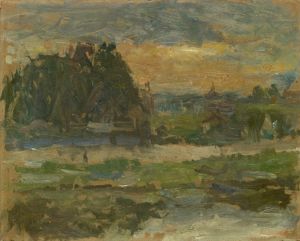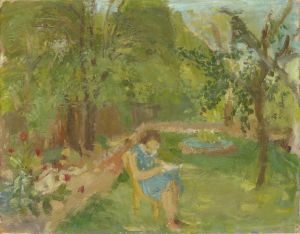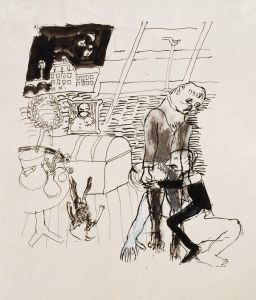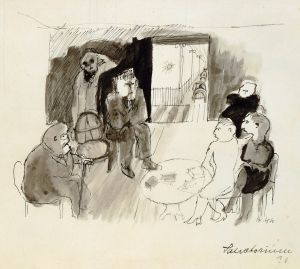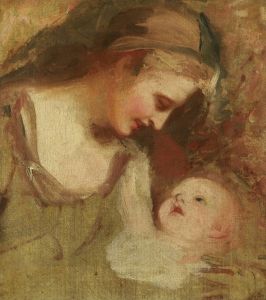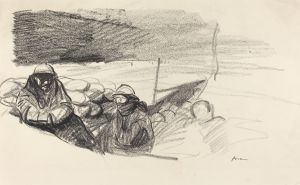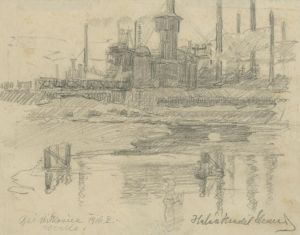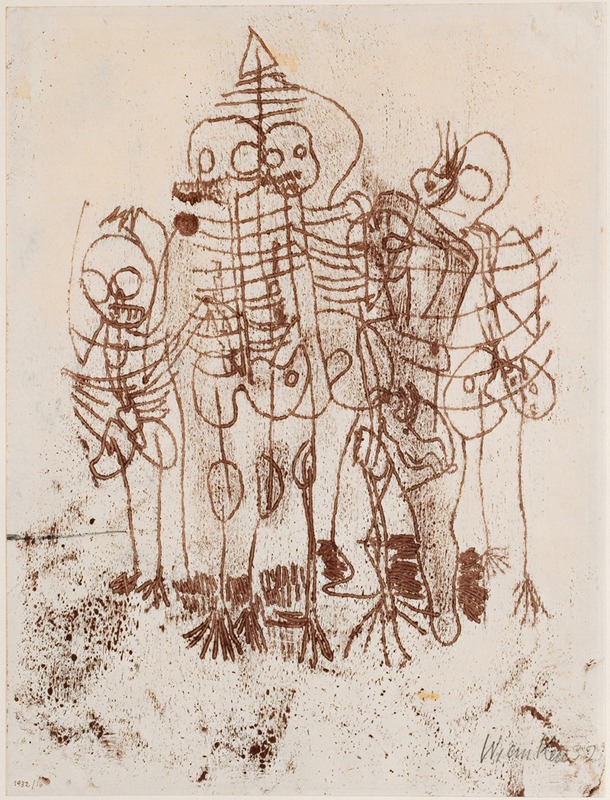
Skelette
A hand-painted replica of Walter Kurt Wiemken’s masterpiece Skelette, meticulously crafted by professional artists to capture the true essence of the original. Each piece is created with museum-quality canvas and rare mineral pigments, carefully painted by experienced artists with delicate brushstrokes and rich, layered colors to perfectly recreate the texture of the original artwork. Unlike machine-printed reproductions, this hand-painted version brings the painting to life, infused with the artist’s emotions and skill in every stroke. Whether for personal collection or home decoration, it instantly elevates the artistic atmosphere of any space.
Walter Kurt Wiemken was a Swiss painter known for his contributions to the expressionist movement in the early 20th century. One of his notable works is "Skelette," which translates to "Skeletons" in English. This painting is a significant example of Wiemken's exploration of themes related to human existence, mortality, and the fragility of life.
"Skelette" was created during a period when Wiemken was deeply influenced by the socio-political climate of Europe, particularly the aftermath of World War I and the economic challenges that followed. The painting reflects the existential angst and the questioning of human values that were prevalent among artists of the time. Wiemken, like many of his contemporaries, used his art to comment on the human condition and the societal issues of his era.
The painting features a group of skeletal figures, rendered in a style that is both haunting and thought-provoking. Wiemken's use of stark lines and muted colors contributes to the somber mood of the piece, emphasizing the themes of death and decay. The skeletal forms are depicted in various poses, suggesting movement and interaction, which may symbolize the ongoing cycle of life and death. This portrayal can be seen as a reflection on the inevitability of mortality and the transient nature of human life.
Wiemken's technique in "Skelette" showcases his mastery of expressionist principles, where emotion and meaning take precedence over realistic representation. The exaggerated forms and dramatic contrasts in the painting are characteristic of expressionism, aiming to evoke an emotional response from the viewer. Wiemken's work often delved into the psychological aspects of human experience, and "Skelette" is no exception, as it invites contemplation on themes of existential dread and the search for meaning in a seemingly indifferent world.
The painting also reflects Wiemken's interest in the interplay between life and death, a common motif in art history. By choosing skeletons as his subject, Wiemken aligns himself with a long tradition of artists who have used this imagery to explore philosophical and spiritual questions. The skeletal figures in "Skelette" can be interpreted as a memento mori, a reminder of the inevitability of death and the importance of living a meaningful life.
Walter Kurt Wiemken's "Skelette" remains an important work within his oeuvre and within the broader context of 20th-century art. It exemplifies the ways in which artists of the time grappled with the profound changes and uncertainties of the modern world. Through its evocative imagery and emotional depth, "Skelette" continues to resonate with audiences, offering a poignant reflection on the human experience.
While specific details about the painting's provenance, exhibition history, and critical reception are limited, "Skelette" stands as a testament to Wiemken's artistic vision and his ability to capture the complexities of life and death through his art.





